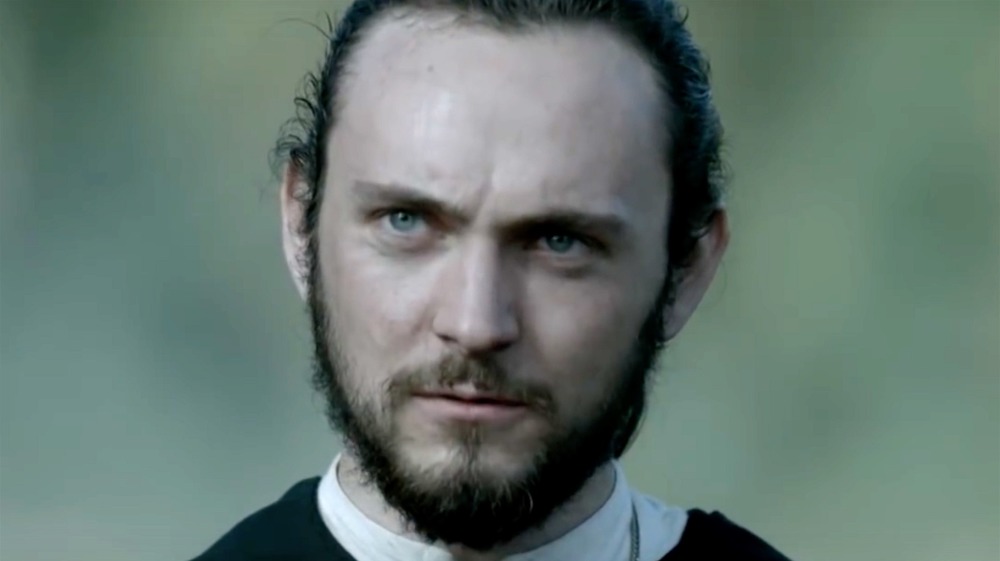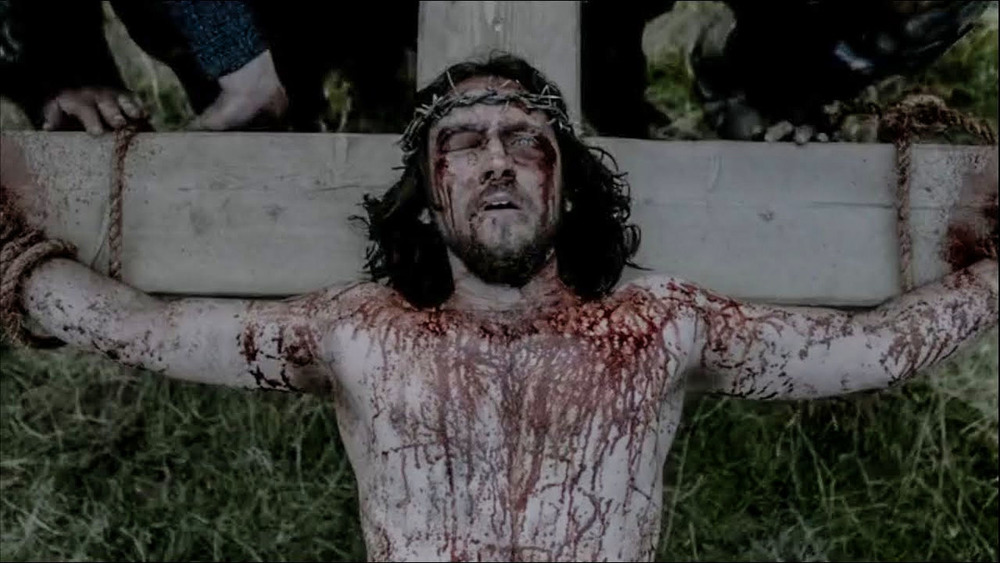What Only History Buffs Will Know About Athelstan's Torture In Vikings
Vikings, History's beloved and long-running historical drama, really straddled the fence between "historical" and "drama." It makes sense. The show takes its inspiration from the sagas of ancient Norse heroes, accounts of events with a tendency toward inflammatory-basic-cable-news-host levels of inaccuracy. Also, try writing six seasons of compelling television based on thousand-year-old Icelandic epics. People had different standards for entertainment back in the day. These days, audiences don't re-up their subscription services for a hundred stanzas of "he was on a boat."
But every once in a while, even the more forgiving history nerds couldn't accept the liberties that Vikings took with, you know, reality. One example in particular has been brought up time and time again: The torture of Athelstan in the show's second season episode "Eye for an Eye." If you're rusty or unfamiliar, Athelstan (George Blagden) is a Christian monk, taken in a Viking raid as a slave. His acclimation to #longboatlife gives audiences a real fish out of water story to glom onto, but it's not all Scandinavian babysitting and politely declining to play unicorn in a Viking throuple.
"Eye For an Eye" sees the hard-luck monk captured and tortured on the orders of the Bishop of Wessex for his perceived abandonment of Christianity. Apostasy is the technical term for the crime, and the punishment is pretty grim. The torture involves Athelstan getting trussed up in a crown of thorns and crucified.
That's where plenty of historians went "uh, nah."
History buffs and Athelstan both felt cross
The thing is, and stop us if you've heard this one, Christians have generally taken a historically dim view of crucifixions. But don't take our word for it — the keen minds over at Medievalists had a bone to pick with the scene, as well.
While they're quick to point out that Michael Hirst, the show's creator and head writer, had reportedly read "the story of an Anglo-Saxon monk who was taken by the Vikings, became an apostate, and was crucified when he returned back to England and was captured by raiding party," they also state that such an account hadn't darkened their doorstep. Additionally, they call it "dubious" to relay "that Christians would ever use this kind of punishment against pagans or apostates — it comes across as almost a mocking of the crucifixion of Jesus." It might also be worth mentioning, as the Express recently reported, that Emperor Constantine had banned crucifixion as a form of execution several centuries before the events of Vikings. Put another way: "Vikings? More like Lie-kings."
Then again, the show also takes place in an age when sunscreen and aestheticians hadn't been invented yet, but nobody complains that all of the main characters look like very attractive television actors with a layer of grime brushed over them. Sometimes TV is just TV.

